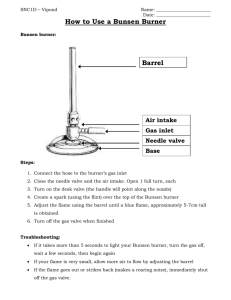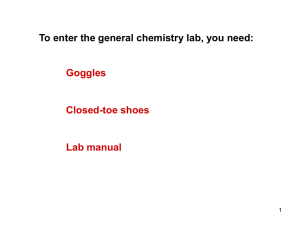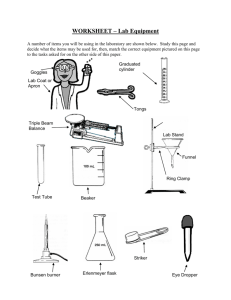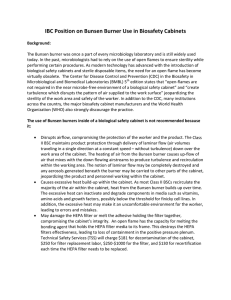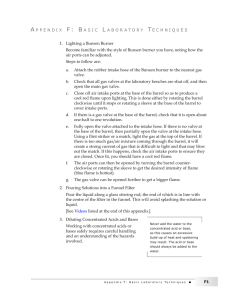Gas Leak Causes Building Evacuation
advertisement
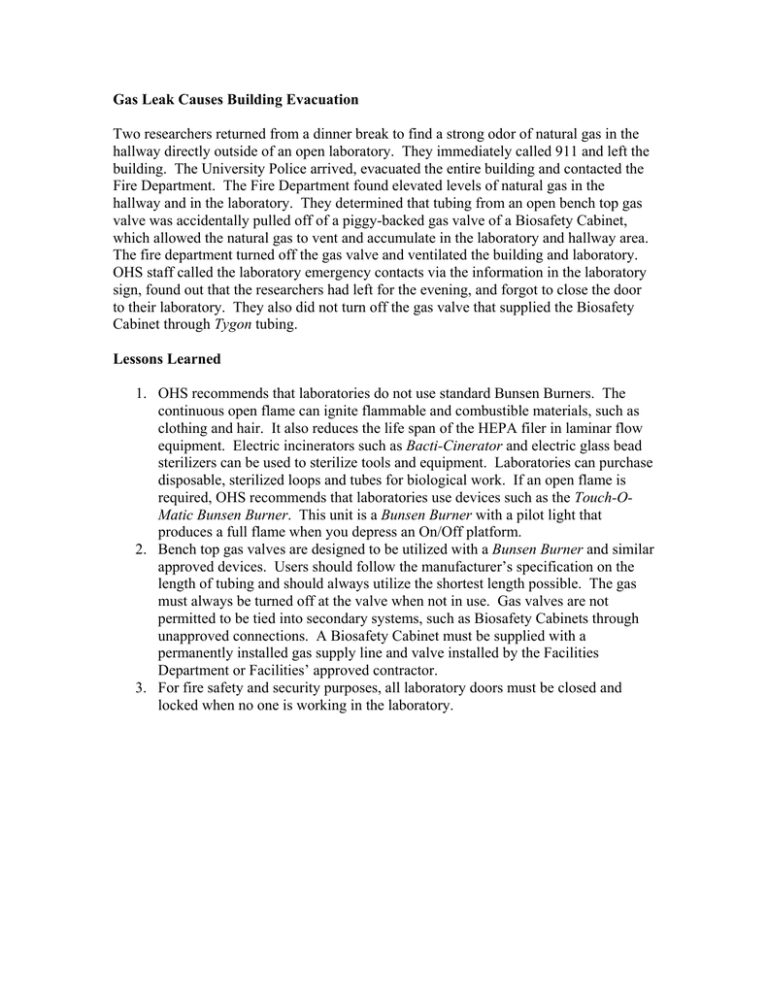
Gas Leak Causes Building Evacuation Two researchers returned from a dinner break to find a strong odor of natural gas in the hallway directly outside of an open laboratory. They immediately called 911 and left the building. The University Police arrived, evacuated the entire building and contacted the Fire Department. The Fire Department found elevated levels of natural gas in the hallway and in the laboratory. They determined that tubing from an open bench top gas valve was accidentally pulled off of a piggy-backed gas valve of a Biosafety Cabinet, which allowed the natural gas to vent and accumulate in the laboratory and hallway area. The fire department turned off the gas valve and ventilated the building and laboratory. OHS staff called the laboratory emergency contacts via the information in the laboratory sign, found out that the researchers had left for the evening, and forgot to close the door to their laboratory. They also did not turn off the gas valve that supplied the Biosafety Cabinet through Tygon tubing. Lessons Learned 1. OHS recommends that laboratories do not use standard Bunsen Burners. The continuous open flame can ignite flammable and combustible materials, such as clothing and hair. It also reduces the life span of the HEPA filer in laminar flow equipment. Electric incinerators such as Bacti-Cinerator and electric glass bead sterilizers can be used to sterilize tools and equipment. Laboratories can purchase disposable, sterilized loops and tubes for biological work. If an open flame is required, OHS recommends that laboratories use devices such as the Touch-OMatic Bunsen Burner. This unit is a Bunsen Burner with a pilot light that produces a full flame when you depress an On/Off platform. 2. Bench top gas valves are designed to be utilized with a Bunsen Burner and similar approved devices. Users should follow the manufacturer’s specification on the length of tubing and should always utilize the shortest length possible. The gas must always be turned off at the valve when not in use. Gas valves are not permitted to be tied into secondary systems, such as Biosafety Cabinets through unapproved connections. A Biosafety Cabinet must be supplied with a permanently installed gas supply line and valve installed by the Facilities Department or Facilities’ approved contractor. 3. For fire safety and security purposes, all laboratory doors must be closed and locked when no one is working in the laboratory.

